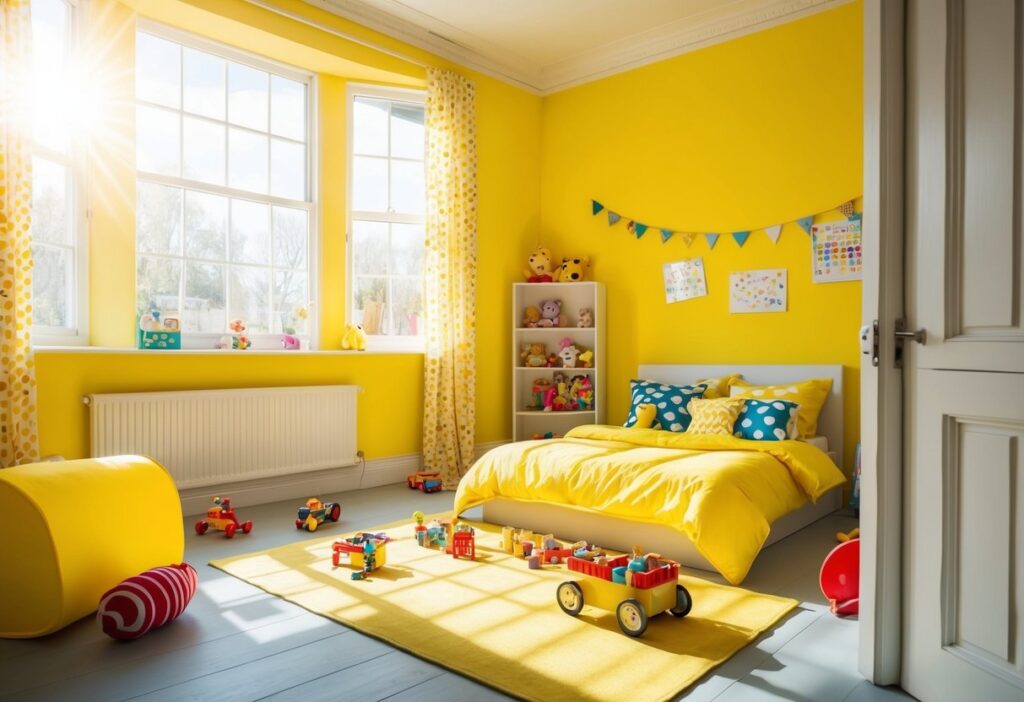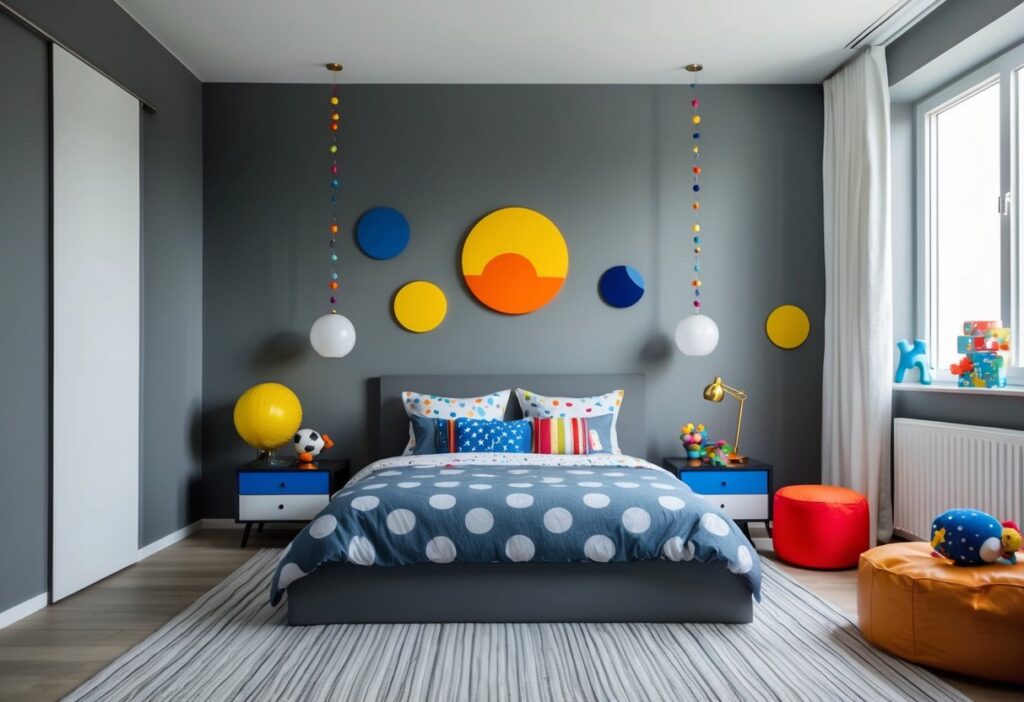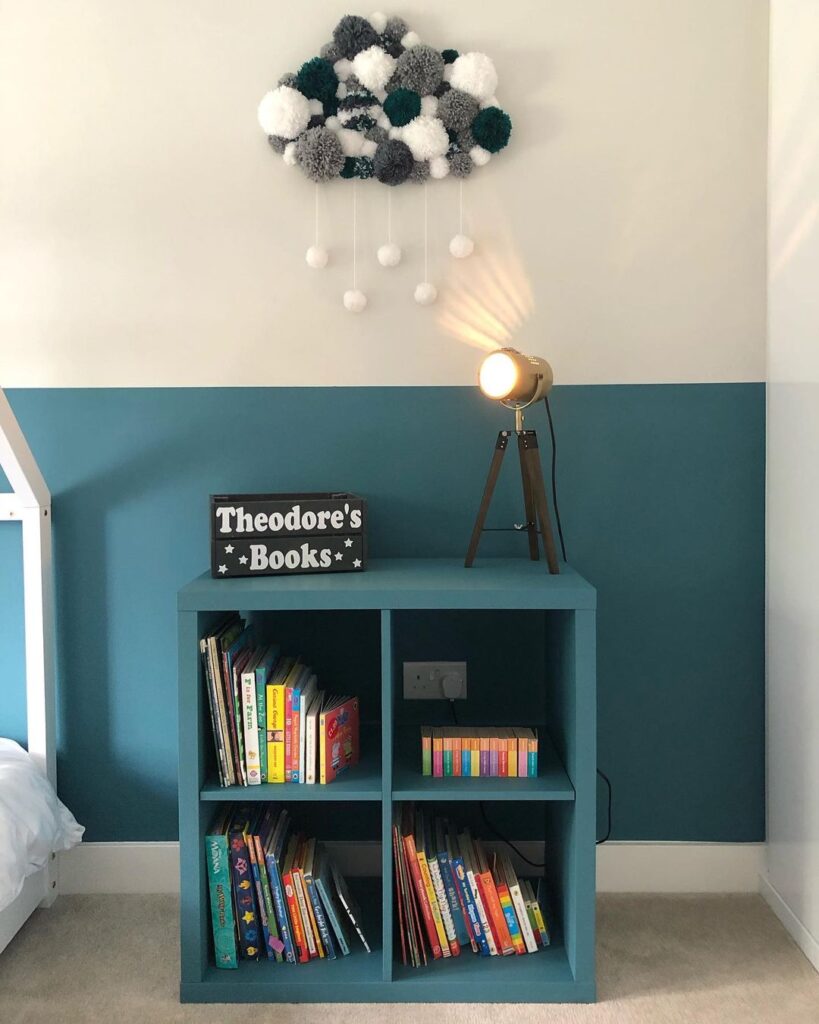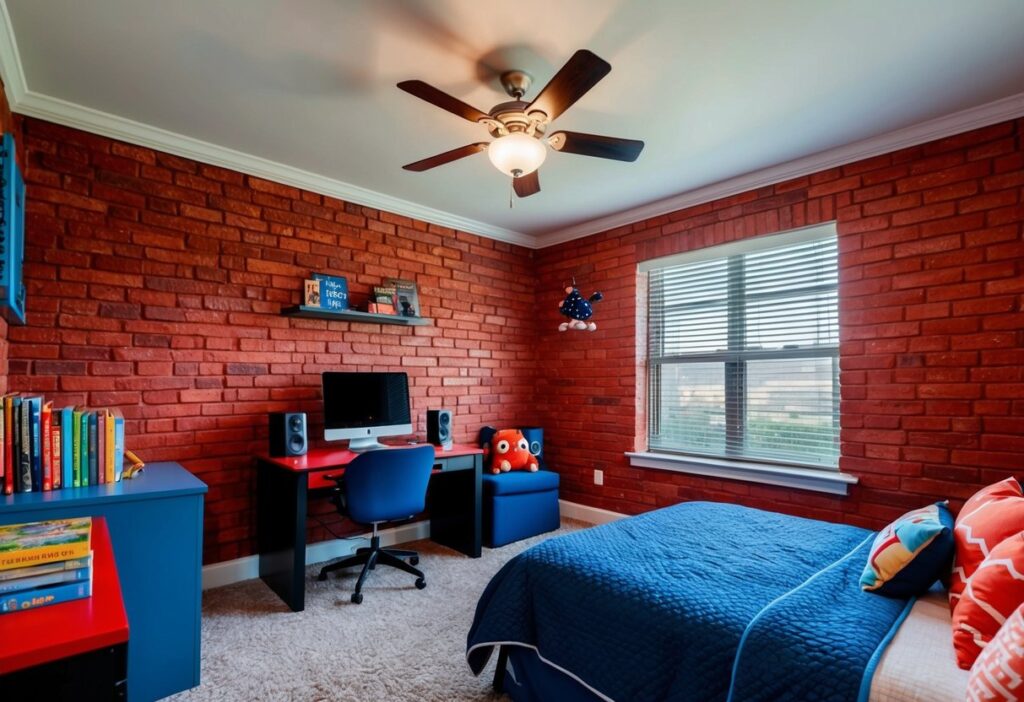9 Best Paint Colors For Boys Room: Create a Fun and Inviting Space
Choosing the right paint color for a boy’s room can be quite the adventure. With so many options available, you might feel like you’re standing in front of a rainbow trying to decide. But what are the best colors that both you and your child will love? These colors can set the mood and make the space feel just right for play, rest, and everything in between.

When picking colors, consider what fits the personality and preferences of your boy. Some kids love bold and bright shades, while others might appreciate something a bit calmer. There are plenty of shades that strike a balance, making both parents and kids happy. Let’s explore some of these fantastic options for creating the ideal boy’s room.
Get the Fail-Safe Paint Color Playbook (Free PDF)
36 proven colors • 8 ready palettes • trim & sheen guide • printable testing cards.
1. Sky Blue

When you’re thinking of a color for a boy’s room, sky blue might just be the perfect choice. This shade mimics the clear blue sky, creating a calming effect that can ease both play and bedtime transitions. It’s perfect for a room where your child can relax or let their imagination soar.
Sky blue pairs beautifully with other colors. Try mixing it with white for a crisp, clean look. Some parents even paint white clouds on sky-blue walls to add a touch of whimsy. This combination brings the outdoors inside and can make the room feel refreshing and airy.
For furniture and accessories, sky blue is incredibly versatile. It looks fantastic with wooden pieces, adding warmth and depth to the room. You can also incorporate it into blankets, rugs, or curtains to tie the room together nicely.
Sky blue grows with your child, staying timeless from toddler to teen years. It’s like having the sky as part of your decor! Whether you’re looking for a peaceful vibe or a playful theme, sky blue can be a reliable and charming choice for any boy’s room.
2. Forest Green

Forest green is a fantastic choice for a boy’s room if you’re after a bold yet soothing color. This shade brings a touch of nature indoors, fostering a sense of calm and relaxation. It’s darker than the typical green, making it versatile for various styles.
Pair forest green with crisp white accents for a clean and striking look. This contrast can highlight the green, becoming the focal point of the room. If you prefer a softer touch, combining forest green with pale pinks or soft blush tones can add a delicate balance.

For an even more dramatic effect, you might consider a color like Benjamin Moore’s Topsoil. While it’s technically a black color with forest green undertones, it can add depth to cabinets or accent walls. The low light reflectance value makes it rich and dark, creating a cozy atmosphere.
Whether you’re aiming for a nature-inspired theme or just want a color that grows with your child, forest green offers a timeless option. It’s a shade that can adapt to different tastes and styles as your child matures.
3. Navy Blue

Navy blue is a favorite choice for boys’ rooms. Why? It’s bold yet calming, making it versatile for any age. Do you want a room that feels strong and cozy at the same time? Navy blue can do that.
This shade pairs well with many colors. You can mix it with white for a classic look, or use it with yellow or red for a nautical theme. Imagine how cool it looks with light wood furniture or bright bedding!
Benjamin Moore’s Bold Blue and Farrow & Ball’s Scotch Blue are popular picks. They add depth and a sense of sophistication to any space. Whether it’s on the walls or just an accent, navy blue creates a cozy and inviting room where your child can relax and play.
4. Sunshine Yellow

Do you want to add some zest to your boy’s room? Sunshine Yellow might just be the ticket! This color is bright yet calming, creating a cheerful vibe without being overwhelming. It’s like having a piece of sunshine indoors, even on rainy days.
Yellow is often associated with happiness and energy. This makes it perfect for a playroom or bedroom setting. It can encourage creativity and foster a lively environment where your child feels inspired to play and learn.
Get the Fail-Safe Paint Color Playbook (Free PDF)
36 proven colors • 8 ready palettes • trim & sheen guide • printable testing cards.
Pair Sunshine Yellow with bold accents like navy or green. This can help balance the brightness and create a grounded look. Try adding colorful wall art or a fun rug to complete the cheerful atmosphere.

Yellow can work in different shades, from soft pastels to richer mustard tones. If you’re hesitant about going all in, consider painting just one wall or using yellow in accessories like pillows and curtains. This allows you to enjoy the happiness of yellow without committing to a full room overhaul.
Did you know designers love to use warm yellows like Valspar’s Lemon Twist? It adds a friendly touch without overpowering a space. Your son’s room could be the next favorite spot in your house, thanks to the sunny glow of yellow!
5. Space Gray

Imagine walking into a boy’s room that feels like a journey through space. Space Gray can give that vibe. This paint color isn’t just gray; it’s got a cool, futuristic feel, almost like something you’d see on a spaceship.
The beauty of Space Gray lies in its versatility. It pairs beautifully with other colors like white and navy blue, creating a harmonious look. You can even add some space-themed decor like star decals or a planet mobile to complete the look.

Space Gray isn’t too dark or too light. This makes it just right for a bedroom, offering a cozy feel while still keeping things bright enough for playtime or study sessions. Plus, it’s great for older kids who might want a room that grows with them.
6. Ocean Teal

Imagine diving into the deep ocean and seeing that vivid, mesmerizing teal. That’s the feeling Ocean Teal brings to a room. It’s a saturated mix of blue and green, creating a peaceful vibe perfect for boys who love the sea or enjoy a calming atmosphere in their space.
Ocean Teal works wonders as an accent wall or even as a full room color. It offers a sense of adventure without being too overwhelming. Pair it with lighter colors like soft whites or sandy beige to maintain that breezy, coastal look. This combination can transport anyone to a peaceful beach day right from their bedroom.

Incorporating some nautical decor can enhance the Ocean Teal theme. Think about adding items like model ships, seashell collections, or framed maps of unexplored shores. These touches make the room truly unique, giving it personality and style.
You might wonder which shade of Ocean Teal to choose. “Deep Ocean” by Benjamin Moore is a great option. With its rich and vibrant hue, it can give a bold look to your child’s room. Make sure to sample the color and see how it looks with the room’s lighting before making a final decision.
7. Soft Mint

Looking for a fresh and fun color for a boy’s room? Soft mint could be just what you need. This shade is light and airy, bringing a touch of nature inside. It’s like a breath of fresh air, making the space feel open and inviting.
Get the Fail-Safe Paint Color Playbook (Free PDF)
36 proven colors • 8 ready palettes • trim & sheen guide • printable testing cards.
Soft mint works well with a variety of themes. Pair it with whites for a crisp, clean look. Or add earthy tones like browns and tans for a cozy, natural vibe. This color isn’t overpowering, so it’s perfect for growing with your child.

Why stop at walls? Soft mint can be a great accent color too! Think about mint-colored pillows or picture frames to bring the color through the room. It’s versatile enough to pair with other hues, like navy or coral, for a bit of contrast and interest.
Plus, soft mint doesn’t just look good; it can feel good too. It’s known for its calming qualities, promoting relaxation and rest. Perfect for a bedroom setting! Want a room that’s soothing and cool? Soft mint might be the answer.
8. Brick Red

Looking for a bold and stylish color for your boy’s room? Brick red might just be the perfect choice! This warm and rich shade is not only cozy but also adds a touch of adventure and energy to the space.
Why brick red? It’s a color that can inspire creativity and boldness. Your little adventurer might feel like he’s in his favorite action movie or exploring ancient ruins.

Pair brick red with soft neutrals or whites for a balanced look. You can also add some fun patterns or textures with rugs and cushions to make the room lively. Don’t forget, contrasting colors like blue or green can pop nicely against brick red, giving the room an inviting charm.
9. Slate Gray

Imagine a room filled with calm and elegance. Slate Gray achieves just that. It’s a color that easily combines masculinity with sophistication, making it perfect for a boy’s room. It’s the kind of color that both kids and parents can enjoy.
Slate Gray pairs wonderfully with bright accents or furniture. It gives you a lot of freedom to experiment with colorful décor pieces. Imagine a vibrant orange pillow or a lively green plant against this calming gray backdrop.
This color isn’t just a pretty face; it’s practical too. Slate Gray can hide those little smudges and fingerprints that are inevitable in a kid’s room. It also works well with various lighting conditions, maintaining a cool charm whether in natural or artificial light.
Get the Fail-Safe Paint Color Playbook (Free PDF)
36 proven colors • 8 ready palettes • trim & sheen guide • printable testing cards.
Factors to Consider When Choosing Paint Colors
Picking the right paint color for a boy’s room involves looking at a few key areas. Think about the child’s age, how big the room is and its lighting, and the child’s likes and hobbies. Each of these can help in creating a space where your child feels comfortable and happy.
Age of the Child
Different ages might prefer different colors. Younger kids often like bright and bold colors like blue, red, or green. These can make the room fun and engaging.
Middle school kids might enjoy softer or more neutral shades. Colors like light gray or a cool blue are calm and adaptable. These colors can grow with them and last for years without needing a change.
For teenagers, consider involving them in the choice. They may have strong opinions about their personal space. Letting them choose can lead to a room they love.
Room Size and Lighting
The size of the room and the kind of lighting it receives influence how colors appear. In small rooms, lighter shades can make the space look bigger. Shades like soft whites or pastels work well here.
In larger rooms, darker colors can add a cozy feel. Warm blues or even a deeper green might be a good choice.
Get the Fail-Safe Paint Color Playbook (Free PDF)
36 proven colors • 8 ready palettes • trim & sheen guide • printable testing cards.
Lighting plays a big role, too. A room with lots of natural light can handle darker hues. In contrast, in a room with less light, bright shades or colors with a warm tone might be better.
Personal Preferences and Hobbies
Every child has unique interests, and their room can reflect that. If a child loves the ocean, colors like sea blue or sandy beige could be ideal.
For a sports fan, consider colors inspired by their favorite team. A paint scheme based on their team’s colors can make the room their favorite spot.
When choosing, ask questions. What colors do they like? Do they have a favorite place or thing? Personalizing the space can make the child feel it’s truly theirs.
Psychology of Colors
Color can affect your child’s mood and energy levels. Choosing the right shades can create spaces that support relaxation, activity, or versatility. Let’s explore how different color palettes influence behavior and feelings in a boy’s room.
Calming Colors for Peaceful Ambiance
Looking to create a quiet retreat? Soothing colors like blues and light greens serve to cultivate serenity and peace. Blue, often linked to calmness and tranquility, is a popular choice for sleep-inducing environments. It lowers heart rates and reduces tension.
Green, on the other hand, adds a touch of nature, promoting relaxation and comfort. Think of shades like sage or mint that have enough character to keep a room interesting but still peaceful. Color psychology links these hues to reduced anxiety and increased wellbeing.
Add these colors through paint or decor elements like rugs or curtains. By using calming shades, you’re constructing a sanctuary in the midst of chaos.
Energizing Colors for Active Spaces
Want to encourage play and activity? Consider bold, lively hues such as orange and red. Orange is closely linked to feelings of enthusiasm and energy, stimulating interaction and conversation. A bright orange accent wall could be the perfect playground backdrop.
Red, a color often associated with excitement and stimulation, should be used with care. Too much can be overwhelming. Instead, use it as pops of color to inspire activity without over-stimulation.
Adding energizing colors to a play area or a spot for hobbies can turn a room into a hub of creativity and fun. Just balance bright colors with quieter elements to avoid a space that’s too loud visually.
Neutral Tones for Versatility
Need a color that suits many moods? Neutral tones offer the flexibility you need. Shades like beige, gray, and taupe blend effortlessly with other hues and adapt to a child’s changing interests.
These versatile shades can lend an adaptable foundation. They serve as a blank canvas, allowing for easy updates or additions as your child grows or their tastes evolve.
Cool grays bring a modern feel, while warm beiges add a cozy touch. Use neutrals in larger pieces like walls or furniture, letting colorful elements like toys and art provide personality. A neutral palette makes the room easy to personalize and update, a practical choice for young explorers.
Painting Tips and Techniques
When it comes to painting a boy’s room, you want to make sure you’re setting the stage for success. This involves preparing the room carefully, picking the right paint finish, and deciding whether to tackle the job yourself or hire a pro. Let’s dive in!
Preparing the Room for Painting
First up, preparation is key. Before you even open that paint can, you’ll need to clear the room of furniture or cover it with protective sheets. Walls should be cleaned to remove any dust or dirt. You don’t want grime messing up your masterpiece!
Taping up edges with painter’s tape is another must. This prevents paint from straying onto trim or ceilings. Also, repair any small holes or cracks with putty.
A properly prepped room makes a big difference in the finished look. Plus, don’t skip on laying down a drop cloth. You’ll thank yourself later when there’s zero cleanup!
Choosing the Right Paint Finish
Now, let’s talk about finishes. For a boy’s room, semi-gloss or satin finishes work wonders. These types are not only durable but also easy to clean.
Get the Fail-Safe Paint Color Playbook (Free PDF)
36 proven colors • 8 ready palettes • trim & sheen guide • printable testing cards.
Is your boy a bit of an artist on the walls? With a semi-gloss, you can easily wipe away crayon marks. Imagine that!
If the room gets a lot of sunlight, consider an eggshell finish. This can help in hiding any imperfections by not being too reflective. It’s a life-saver!
DIY vs. Professional Painting
Deciding whether to paint yourself or hire someone can be tricky. DIY projects save money and can be a fun bonding activity. Got a free weekend? Go for it!
However, if you’re short on time or dealing with tricky spaces, hiring a professional painter might be your best bet. They have the experience and tools to do the job quickly and beautifully.
Consider the room size and the complexity. Sometimes it’s worth it to call in the experts if it means getting perfect lines and even coatings. Nothing beats a flawless finish!
